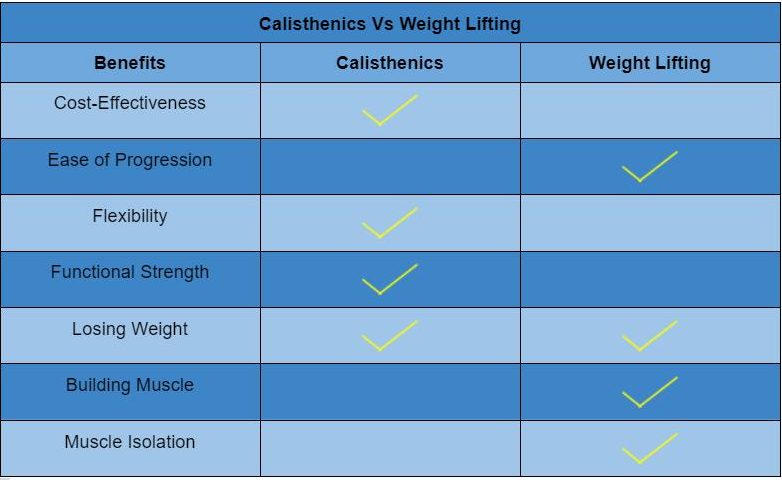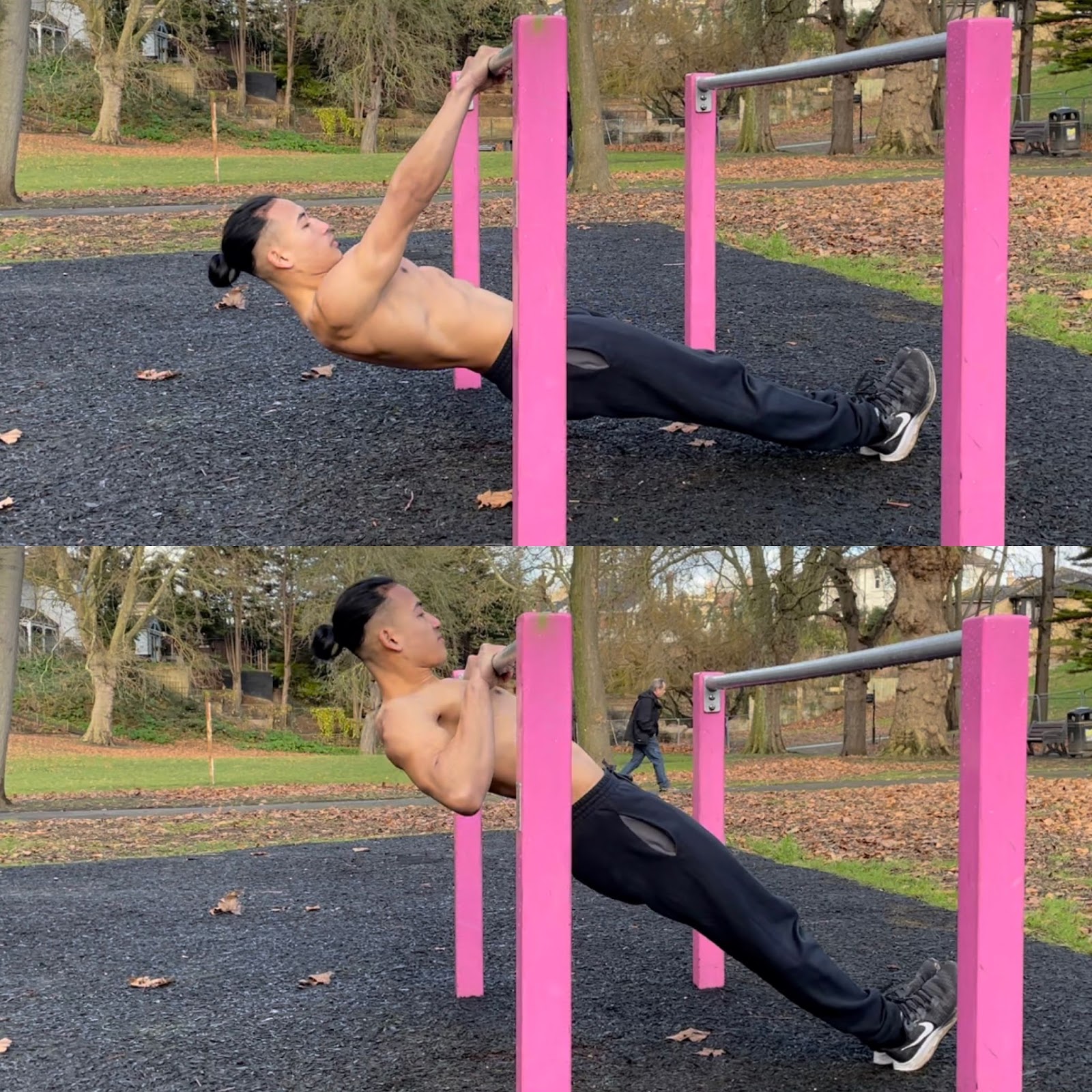Calisthenics or Weight Lifting – Which Works Better?
Both options are great for developing your health and fitness levels, and which is better all comes down to what your fitness goals are. For example, if your goal is to develop muscular strength and endurance, both methods are great, however, weight lifting will take you a step further when it comes to building mass and targeting specific muscles.
When it comes to strength transfer, calisthenics wins. For instance, take weight lifters that can bench 400lbs, row 350lbs, or deadlift over 500lbs. This group will have high power and raw strength. But, if you were to ask them to do 15 pull-ups or 50 push-ups, they might not be able to because weight training is not transferable into calisthenics.
On the other hand, calisthenics athletes have higher body awareness, also known as proprioception, and better core engagement. Compound movements will utilize your core more than isolating a muscle group on a weight machine. This is why a weightlifter does not have as much proprioception as a calisthenics person has.
In calisthenics, you will have higher leverage in accessing other muscles in the body to assist you with weight lifting such as your core, due to better body awareness. Moreover, there is a higher degree of motor unit recruitment involved in the planche or handstand push-ups. This explains why Yan Mingyong, a gymnast who weighs 50kg, is capable of benching 130kg.

Beginner Calisthenics Workouts and Exercises
If the above benefits of calisthenics vs weight lifting have persuaded you to give bodyweight training a go, then there’s no time better than now to get started. Below, I’ve listed some simple bodyweight exercises you can try. Remember, for each exercise, follow these rules:
- Follow the recommended reps range
- 45 seconds rest in between exercises
- 2 minutes rest in between cycles
- Do 4 cycles
Australian Pull-Ups

Australian pull-ups strengthen your back muscles, biceps, and core.
- Position yourself under a low bar with your waist being underneath the bar. Grip the bar tightly using an overhand grip at shoulder-width apart, and arms fully locked out. Engage your core and glutes to form a straight line from head to feet. Your body should be at an inclined slope.
- Inhale as you pull down the bar to your chest by contracting your back and bicep muscles. Pull up as high as you possibly can while keeping your body in a straight line.
- Exhale and lower yourself back to the starting position by lowering your chest away from the bar.
- Repeat this between 6-12 reps.
Bench Dips
Bench dips will develop your pushing strength and it primarily targets your triceps, pecs, front shoulders, and core.
- Sit down on a bench with your hands next to your thighs, gripping the edge of the bench tightly (fingers facing forward).
- Simultaneously, walk your feet out while straightening your arms until your bottom clears the bench and your arms are fully extended. Keep your feet together and heels digging into the ground.
- Inhale and bend the elbows to lower down until your arms are at 90 degrees while keeping your core tight.
- Exhale as you contract your triceps and chest muscles to extend your arms and return to the starting position.
- Repeat this between 8-12 reps.
Knee Push-Ups
Knee push-ups are great for building the upper body and core strength. It targets your chest, triceps, core, and front shoulders.
- Begin on all fours with your wrists underneath your shoulders. Step your knees back until they’re in a straight line through your body from your knees up to your head.
- Inhale as you bend the elbows to lower your body toward the ground while keeping your core and glutes tight to maintain a straight line.
- Exhale and push your hands into the ground, keeping your body engaged and returning to the starting position.
- Repeat this between 8-12 reps.
Lying Knee Raises
This exercise can be performed while lying on your back to improve your core strength and stability in your lower back.
- Lie on your back with your legs extended, feet together, and arms by your sides with your palms pressed into the ground. Engage your core to press your lower back flat into the ground (it should not be arched at all times)
- Inhale as you slowly lift both knees and draw them as close as you can to your chest.
- Exhale and gradually extend your legs to the starting position without letting your heels touch the ground.
- Repeat this between 10-12 reps.
Squats
The bodyweight squat is a simple and effective exercise that will develop your lower body strength. It targets your quadriceps, glutes, hamstrings, calves, and core.
- Stand tall with feet hip-width apart and toes pointing slightly outwards.
- Inhale as you bend your knees and drive your hips back as if you’re sitting on a chair while keeping your heels on the ground and your torso upright. Lower down until your knees are at 90 degrees. Keep your core tight throughout this movement.
- Exhale and press into your heels to extend your legs to return to the starting position.
- Repeat this between 10-12 reps.
Disclaimer
The Content is not intended to be a substitute for professional medical advice, diagnosis, or treatment. Always seek the advice of your physician or other qualified health provider with any questions you may have regarding a medical condition.